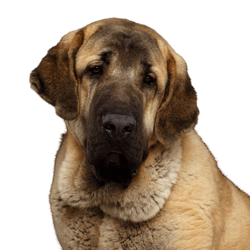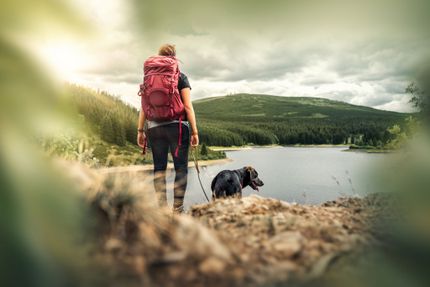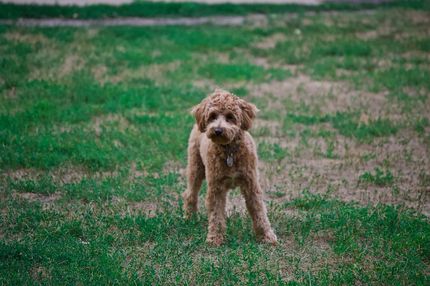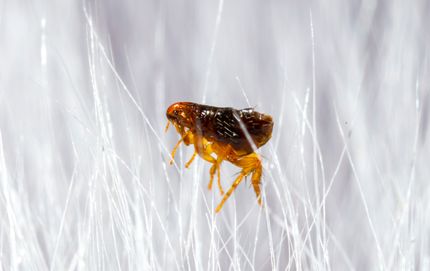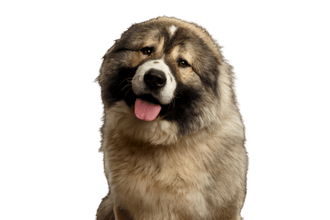
Caucasian Shepherd Dog Breed description: Character & Co
Caucasian Shepherd Dog
Facts & Origin
What is the origin of the Caucasian Ovcharka?
The Caucasian Owtscharka is one of four types of Russian shepherd dogs. As the name suggests, its origin can be found in the Caucasus. This mountainous region is known for its harsh climate. Bears and wolves can still be found here today. The Caucasian Ovcharka is able to cope with all these adversities.
In the course of time the Owtscharka has spread over the whole former Soviet Union region. Depending on the region there are therefore different variants to be distinguished. The Owtscharkas native to the mountains are more compact and heavier, those living in the lowlands are a little lighter and taller. This dog species most likely goes back to the first Tibetan mastiffs. The Caucasian Owtscharka has been first documented over 600 years ago. It was primarily used to herd sheep and, whenever necessary, to protect their human owners. It would courageously face wolves, bears and robbers. For this reason this archaic type of dog needs to have a certain size as well as strength and it needs to be able to act independently as well as be of a modest nature. In the Eastern Bloc countries the dog was also used for military and police purposes, for example as a guard dog in the GDR and other Eastern Bloc states. Since then, this dog breed has gained in popularity. Meanwhile there are also people who buy a Caucasian Owtscharka to use it as a family and companion dog. As such it shows its trusting and gentle nature. It was officially recognised by the FCI only in 1984.
What are the breed characteristics of the Caucasian Ovcharka?
Russia takes care of the breed standard of the Caucasian Owtscharka. The dog breed is classified in FCI Group 2, Section 2.2, Standard No. 328, according to which it is not a sheepdog of the first group, but belongs to the group of Schnauzers, Great Danes, Newfoundland dogs and St. Bernards. It is an extremely large, impressive dog with an undemanding, calm appearance. Their eyes have an attentive and alert look. It's strength hold something very primeval.
Two main types have developed according to their geographical spread: The Steppe Caucasus and the Mountain Caucasus. The Steppe Caucasian is rather long-legged, light and has short hair. The Mountain Caucasian is square-shaped, strong and its coat is longer. The breed standard maintained by Russia combines these two types into one standard. Both variations are permitted.
There are long-haired and short-haired variations as well as a transitional type.
- Long-haired type: ruff, like a mane, strongly feathered tail.
- Short-haired type: Short top coat, to be found especially in the Steppe Caucasus.
- Transition type: Medium length hair, longer top coat, which however does not form a mane or feathered tail, most common type.




| Alternate Name | Caucasian Ovcharka |
| Origin | Russia |
| Life expectancy | 12 - years |
| Care requirements | - |
| Activity level | - |
| FCI group | Molossian type |
| AKC group | Foundation Stock Service |
| KC group | not recognised |
Attitude, character and temperament of the breed
What are typical characteristics of the Caucasian Ovcharka?
Even outside the Caucasus and the steppes the Ovcharka is and remains a guardian and protector. But mostly the dog has a calm nature, observes and guards. It is suspicious of strangers. As soon as it senses danger, it immediately becomes protective. It claims a large territory and should be kept on a big property. A fence is indisputable, otherwise it will endlessly expand its territory. If you can't provide them with sufficient space you should not consider keeping a Caucasian Ovcharka as your pet.
Towards their family the Ovcharka act in a friendly, caring and loyal way. It might sometimes bark when it is being protective. It is not a notorious barker who must report everything immediately.
The Caucasian Ovcharka has a strong, independent and sometimes stubborn nature. It does not have a need to please their owner. Blind submission is foreign to them. Raising a Caucasian Ovcharka puppy is not easy and it requires an experienced owner to do so. Otherwise the Caucasian Ovcharka can become dangerous. Properly trained, you will end up with a loyal companion and guardian.
Apart from needing a lot of space, the Caucasian Ovcharka is extremely low-maintenance. A simple kennel is sufficient for them. You don't have to offer them toys or activities, it is enough for them to be able to move around on a large property. They are also not very picky about food and you can simply stick to a species-appropriate raw feeding.
Character
Usage
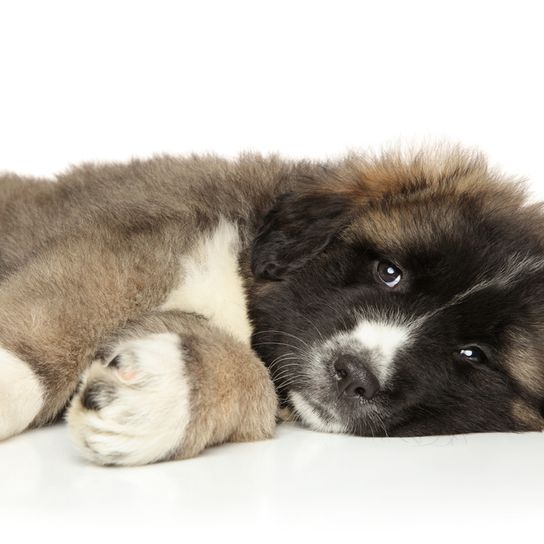


Health and breeding information
What are typical diseases of the Caucasian Ovcharka?
This dog breed often suffers from
- hip and elbow dysplasia (HD and ED) as well as
- knee problems.
- Hereditary eye diseases like ectropion and entropion can occur.
But in general this breed is quite healthy.
What to consider in regards to Caucasian Ovcharka breeding?
In Denmark and the Netherlands, the Caucasian Ovcharka is considered dangerous. In these countries it can happen that the dog gets confiscated and euthanized. Outside Russia there are few Caucasian Ovcharka breeders. While the breed standard is quite generous in coat and size, breeders must pay special attention to the dog's health problems. In general, these shepherds are quite healthy, but as with other larger breeds, joint problems can occur.


Appearance and coat of the Caucasian Ovcharka
The coat has a dense undercoat, the undercoat is usually lighter in colour than the top coat. Permitted are the following colours:
- grey
- white
- straw yellow
- earth-coloured
- rust-coloured
The coat of the Ovcharka can also be striped, brindle, pied or spotted. Black or black-spotted types are not permitted.
What is the average size of the Caucasian Ovcharka?
Males: 68 to 75 cm
bitches: 64 to 70 cm
How much does a Caucasian Ovcharka weigh?
A Caucasian Owtscharka male weighs about 50 kg. Bitches weigh about 45 kg.
What is the average age of a Caucasian Ovcharka?
As a rule, a Caucasian Ovcharka can reach an age of about 12 years, but sometimes also more.
| Fur length | medium |
| Fur | flat coated |
| Ear shape | Triangle |
| Tail | fanned out |
| Anatomy | massive, strong |
| Size ♀ | 64 - 70 cm |
| Weight ♀ | 40 - 45 kg |
| Size ♂ | 68 - 75 cm |
| Weight ♂ | 45 - 50 kg |
| Suitable For | - |
Colors




Known Diseases
Eye diseases
Often occur with allergies and intolerances.
Elbow dysplasia (ED)
Elbow joint dysplasia is a chronic disease complex of the elbow joint of fast growing dog breeds.
Hip dysplasia (HD)
The hip dysplasia or hip joint dysplasia of the dog (HD) is a maldevelopment of the hip joint.
Knee injuries
Some breeds, unfortunately, especially suffer from knee injuries of various kinds.
Other large dogs
Useful Articles
You can find articles that might interest you in the dogbible blog to match your favorite breed.
Visit our magazineto stay up to date on dog trends.
To find out more, view our Privacy Policy
Find here the breed that suits you and find out what character traits it has. Here you can also learn more about the origin, size and weight of your favorite breeds.
Matching your favorite breed, you'll find articles that might interest you on the dogbible dog blog.
Hip joint and elbow dysplasia in dogs
Vacation with the dog at the sea: Is salt water dangerous for my treasure?



